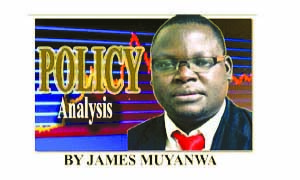AS we continue remembering late Zambia’s first President Kenneth Kaunda, today, we focus on the national land policy he introduced in the country in the immediate post-independence era from 1964 to, say, 1974.
That was against the backdrop of the land rights and interests for whites and blacks in such categories of land like the Native Reserves, Crown Land Reserves and Trust Land Reserves of the pre-independence period.
In that era black Africans were disadvantaged given that large areas of the native reserves which were allocated to them had proved to have been uninhabitable.
This was due to lack of water supplies or the presence of tsetse fly and many other factors, and yet many areas in Crown Land Reserves from which the natives had been evicted were left without inhabitants.
Between 1964 and say early 1970s there were a lot of political, social and economic changes that Dr Kaunda administration introduced which impacted on the Zambian land administration system, for obvious reason.
In my view, Dr Kaunda’s government faced two main issues which remained outstanding during the transition period.
The first one was the high expectation among the citizens on the issue to do with their right to land on one hand and the other was the retention of the control of prime land by settlers – the whites.
Against the mistaken belief by Africans that good land would, upon attainment of political independence, almost automatically be made available to the natives or black Zambians, the settlers held on to it.
This is to the frustration of Dr Kaunda and others.
Zambia inherited four categories of land in 1964: State Land, Freehold Land, Reserves and Trust Land.
This is according to M. Adams in his book, “Land Tenure Policy and Practice in Zambia: Issues Relating to Development of Agricultural sector,” published in 2003.
Generally, as already alluded to, one of the reasons for the native Northern Rhodesians’ push for independence was land, so that they could freely acquire interests in it without any discrimination on colour or racial basis.
Therefore, it was imperative that the majority government formed by Dr Kaunda and others addressed the issue of land as a matter of urgency.
Again, as already indicated, the situation was made imperative by the continued holding on to the prime land by the whites.
Following their loss of political power to the black majoritarian government, most whites started leaving Zambia, but without abandoning their interest in land.
In short, while they were away they continued holding on their interests in land and in most cases could not even develop it by remote further frustrating Dr Kaunda’s government.
This gave yield to the concept of “absentee landlords,” in reference to them.
I will, in the near future, one day revert to this concept by looking at the views of renowned Cyprus –born author, former Zambian freedom fighter and entrepreneur, Andrew Sadarnis in his book, “ZAMBIA: the first 50 year.”
For now I will say, upon Northern Rhodesia becoming independent Zambia, most of the statutes and other laws governing land affairs were retained by Dr Kaunda’s new government.
Provisions like those in the Northern Rhodesia (Crown lands and Native Reserves) Order in Council of 1928-63, the Northern Rhodesia (Native Trust land) Orders in Council of 1947-63 and the Northern Rhodesia (Gwembe District) Order in Council of 1959 were not revoked.
The Zambia Independence Order of 1964, however, provided that the orders were to be interpreted in line with the Independence Order.
So, generally, the new country inherited the dual land tenure system having received the system of freehold and leasehold on one hand and customary on another.
Following the change, the people expected their new government to deal with the issue of land to make it more accessible to the indigenous people on fairer terms.
Through the Zambia (State land and Native Reserves) Order land was transferred to and vested in the president of Zambia together with all rights in it.
This was in relation to other immovable property in Northern Rhodesia that were vested in the British sovereign immediately before independence and all native reserves that were vested in the Secretary of State immediately before Independence.
Similarly the Zambia (Trust land) Order transferred to and vested in the president all native trust land that was vested in the Secretary of State before Independence.
Exactly a month after independence, Dr Kaunda constituted a Cabinet Land Policy Committee to probe the issue of land.
Consequently a Land Commission called The Johnson Land Commission was also appointed in 1965 to advise the Cabinet Land Policy Committee.
The terms of reference of the Cabinet Land Policy Committee were: to examine all aspects of land policy and administration which were inherited on Independence; to examine the land problems submitted by the provincial working committee; and to submit recommendations to the Cabinet on the future land policy and land laws of Zambia.
Next week, we will focus on Dr Kaunda’s legacy in land between 1974 and 1991.
For comments call: 0955 431442, 0977 246099, 0964 742506 or e-mail:
jmuyanwa@gmail.com.







